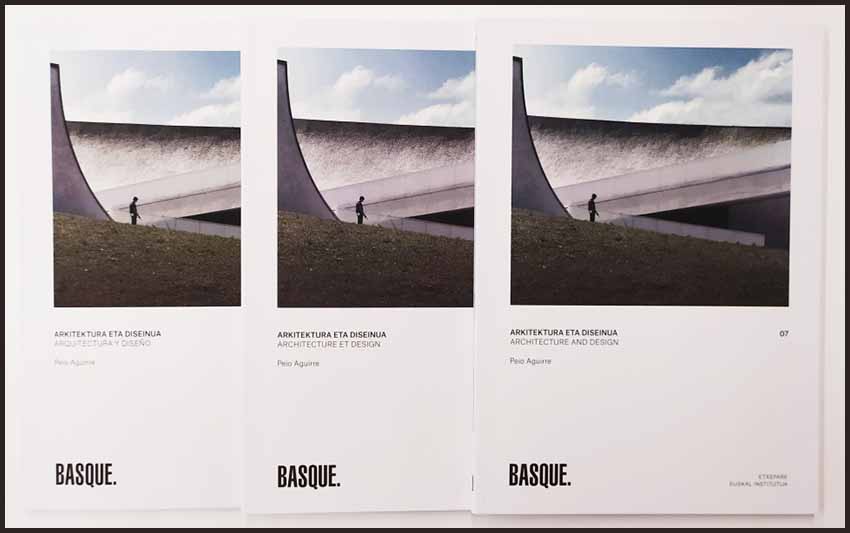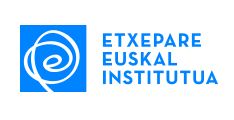Donostia-San Sebastián. For architecture and design to be considered part of the cultural heritage of a territory, both first need to be distinguished and defined, followed by a revision of its place within the cultural archive. This is what Basque. Architecture and Design, is, the first reprint on paper of a collection dedicated to twelve cultural expressions supported by the Etxepare Basque Institute.
The first edition was published eight years ago. Updated, the entire series is being relaunched this year. Peio Aguirre, art critic, curator and editor of independent exhibitions, wrote the one dealing with architecture and design.
The book includes four sections entitled, “The Beginnings of Modern Architecture in the Basque Country,” “Modern Architecture in the Basque Country” “The Beginnings and pioneers of Industrial Design,” and “Design Today.” In this way, it captures how tradition and the avant-garde have been combined in the territory of the Basque language, showing through the window of culture, the meeting place between the native and the foreign.
In the section on Architecture, Aguirre goes back to the beginning of the Modern Movement. The first part begins with the Club Nautico in Donostia-San Sebastian, in a rationalist style, constructed by Jose Manuel Aizpurua and Joaquin Labayen both from Gipuzkoa. The two represent the most cutting-edge avant-garde in San Sabstian. He also mentions other representatives of the Modern Movement such as Luis Vallejo, Fernando Arzadun and Florencio Mocoroa.
Afterwards, the author delves into the roots and peculiarities of contemporary architecture. He examines the shared authorship of architectural projects and the disappearance of the figure of the omnipotent architect, also reviewing several memorable buildings such as the Basque Culinary Center, the remodel of the Fish Market Donostia-San Sebastian’s port, the Basilica of Arantzazu, Santiago Calatrava's Airport in Loiu, and the Guggenheim. Likewise, he reviews the Basque architectural offices.
In regards to design, Aguirre traces the path from traditional crafts to the machine tool industry. Nestor Basterretxea stands out as one of the great milestones. He also focuses on the development of culture design, mentioning among others, the Bilbao DZ Design center, the Basque designers Association (EIDE) and the Bilbao Kunsthal Design School.
He makes a stop on furniture design and the fashion tendency baptized the “New Basque Style.” He also puts on the table that we are not at the moment of applying design to gastronomy.
The Origin
The reprint of these books or monographs of Basque cultural expression originated in 2012, when the collection Basque Culture Collection was published in Basque, Spanish and English. It focused on language, literature, classical music, Basque composers, dance, cooking, visual arts, traditions and Basque film.
Specifically, the titles and authors of the books were
1. Short History of the Basque Language (Ivan Igartua and Xabier Zabaltza)
2. Basque Literature in the 20th Century (Estibalitz Ezkerra)
3. Basque Classical Music (Karlos Sanchez Ekiza)
4. Basque Song: Pop, Rock, Folk (Jon Eskisabel)
5. Stamp Collections (Visual Arts) (Miren Jaio)
6. Basque Film (Joxean Fernandez)
7. Architecture and Design (Peio Aguirre)
8. Basque Dance (Oier Araolaza)
9. Bertsolaritza (Joxerra Garzia)
10. Traditions (Joseba Zulaika)
11. About Basque Cooking (Hasier Etxeberria)
According to Mari Jose Olaziregi, editor of the collection at that time, its objective was “to provide updated, attractive and at the same time solid information on Basque creation, presented in an accessible way for those who were interested.”
The entire collection will be reprinted throughout 2021 in three bilingual formats: Basque and Spanish, Basque and English, and Basque and French. The topics covered will be traditions, Bertsolaritza, Gastronomy, Basque Composition, Classical Music, Theater, Plastic and Visual Arts, Dance, Literature and Film. They are already available in digital format.






 Send to a friend
Send to a friend Add comment
Add comment








